![]() Indiana Jones and the Fate of Atlantis is one of those games that I’ve wanted to try since I first heard about it. When I learned there was a Wii game that included this classic adventure game as an unlockable extra (this was years before I discovered GOG.com, mind you), I figured that taking a chance on something I otherwise might have passed up couldn’t hurt.
Indiana Jones and the Fate of Atlantis is one of those games that I’ve wanted to try since I first heard about it. When I learned there was a Wii game that included this classic adventure game as an unlockable extra (this was years before I discovered GOG.com, mind you), I figured that taking a chance on something I otherwise might have passed up couldn’t hurt.
It hurt.
Indiana Jones and the Staff of Kings (Wii, 2009)
This could have been a decent game, had it been released five years earlier or later. The Wii era, from my experience, was where industry-standard game design principles hit rock bottom. Staff of Kings embodies the three worst of these: basing your game around the hottest new gimmick instead of seeing how well the gimmick fits into your game concept, beating the player over the head with tutorials, and setting inconsistent expectations.
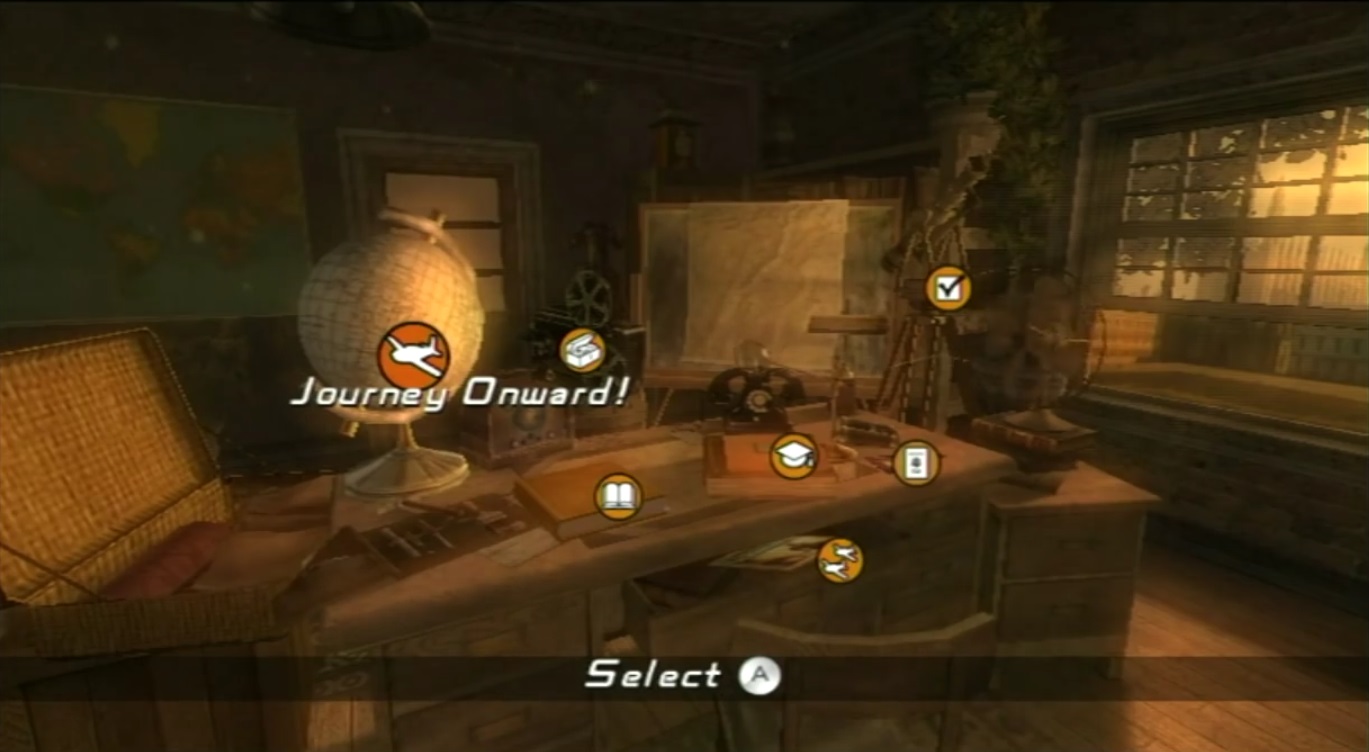
Staff of Kings starts off well enough. The main menu looks and sounds appropriately Jonesy, and I was pleased to find a Tutorial option here that lets you read through the controls before jumping into the game—I brushed up on all the different ways you could punch and whip things. Rule #1 of immersion: Teach players everything they need to know before they begin, or give them enough clues to figure things out for themselves as they go. As the game begins, there’s a cutscene where the voice actor for Indy sounds convincingly enough like Harrison Ford. Keep it up, game; you’re doing fine.
I gained control of Indy, and it was mere moments before the immersion factor was dampened by icons appearing above objects of interest to show how I should interact with them. To be fair, this was still the first mission; I expected a little handholding, especially in a Wii-era game. And, frankly, I was grateful for the guidance, considering how hard it was to see everything. Brightness controls for console games like this one have been practically mandatory since at least the GameCube; the display options for Staff of Kings include a screen with a color gradient so you can stand up and manually adjust the brightness of your television, like this is a game for the Apple II.
Despite this, the game was shaping up to be an adequate adventure. The learning curve was appropriate. Dying was a minor setback, with regular continue points and infinite lives. The whole first mission looked and felt like it belonged in an Indy movie, right down to the bad guy swooping in at the end of the mission and stealing the treasure. Now I was outside, in the middle of the bad guy camp, and a nameless thug was descending on my position. Time to put what I learned in the pre-game tutorial to the test and see how well motion-controlled combat worked.
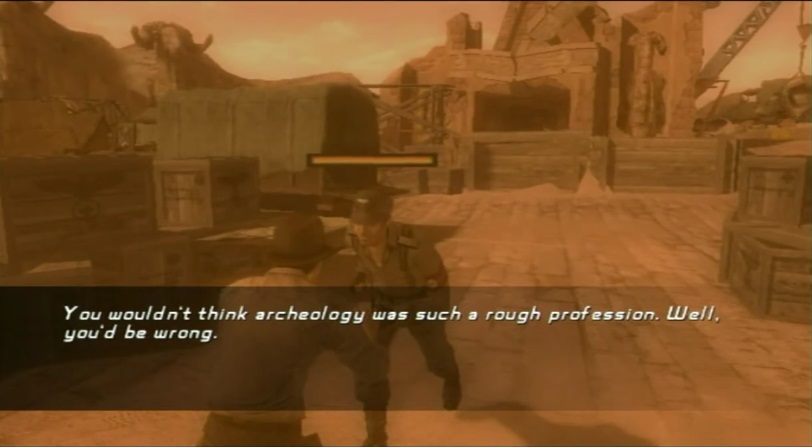
What is this. What are you doing.
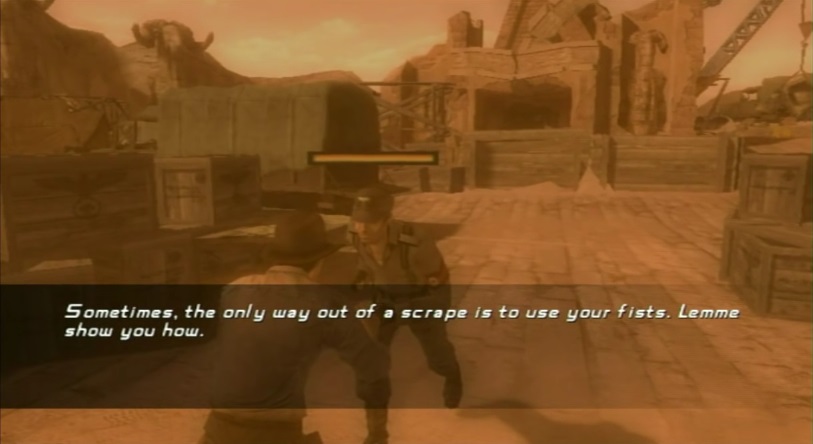
WHAT. No. Don’t do what I think you’re going to do.
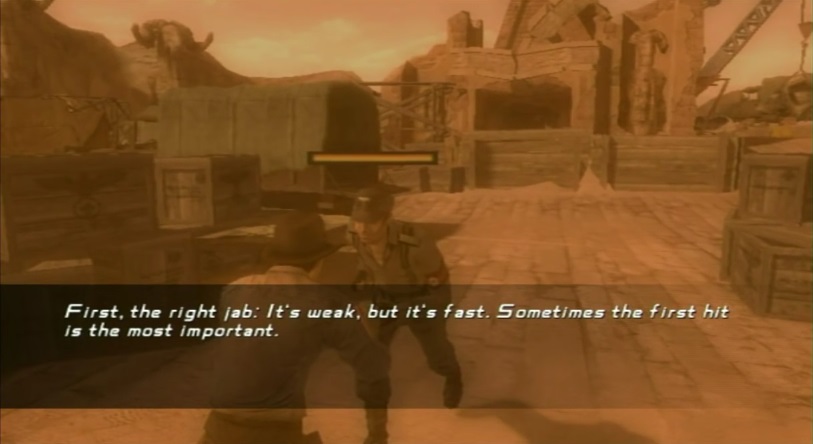
Nooooooooooo!!!!

NOOOOOOOOOOOOOOOOOO!!!!!!!!!!!!
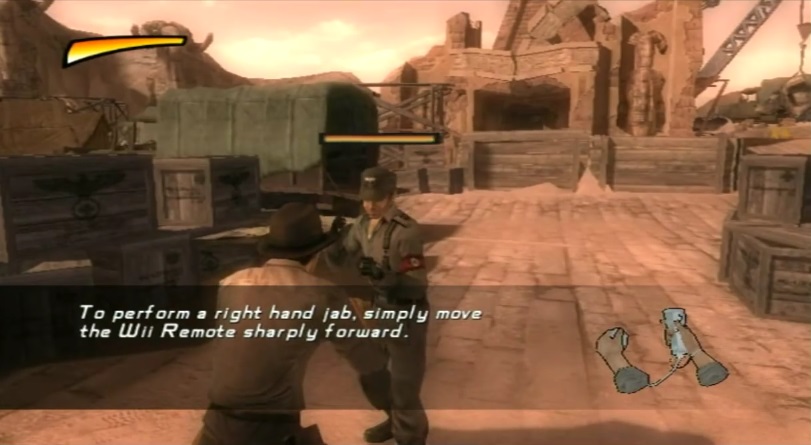
I READ ALL OF THIS IN THE PRE-GAME TUTORIAL ALREADY!!!
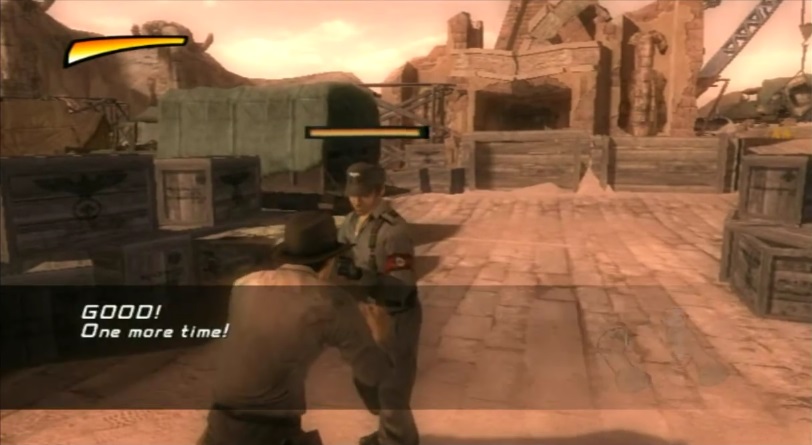
FINE! I’LL PUNCH HIM AGAIN! CAN WE GET ON WITH THE GAME NOW?
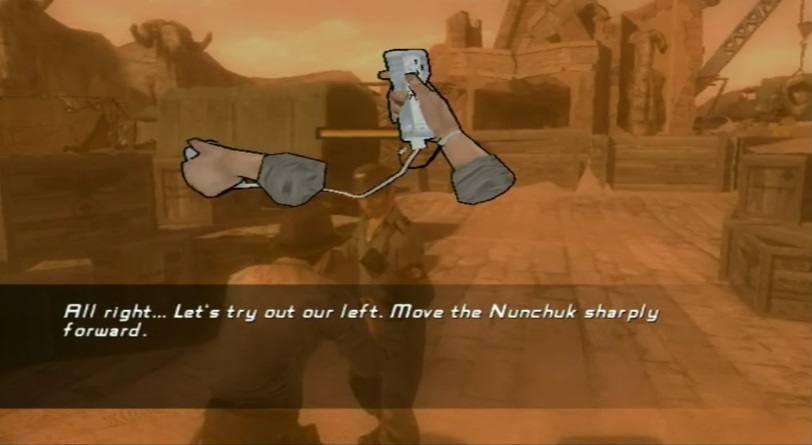
WHAT!?!? WE DON’T NEED TO DO THIS WITH EVERY HAND! MOVE ON!!!
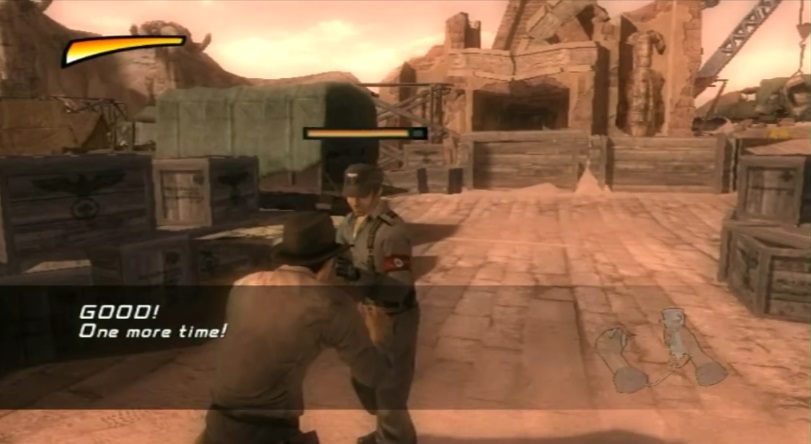
BAD! NO MORE TIMES!
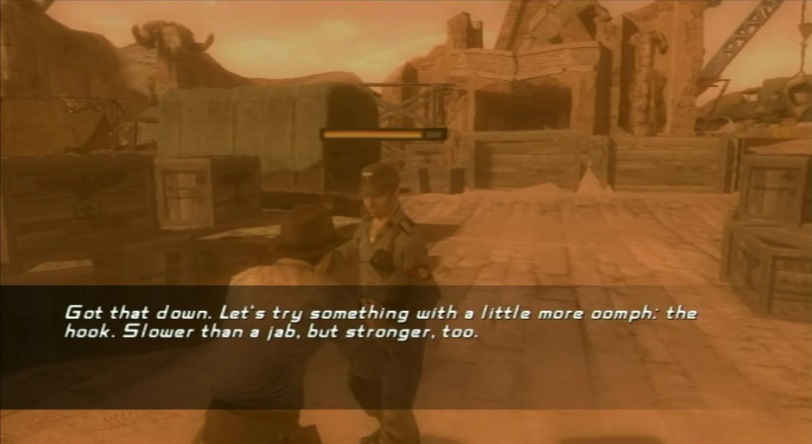
*sigh*
Two right hooks, two left hooks, two right uppercuts, and two left uppercuts later, I had taken down a single defenseless minion who stood still and didn’t fight back. Now I was ready to take on an army!
Despite the writers making a good effort to make the tutorial sound like an inner monologue, whatever sense of immersion I might’ve had was completely obliterated. Not only was this a massive interruption, but it was unskippable, and took forever (“forever” being only 90 seconds, but only a fraction of that was productive gameplay)—that’s three strikes, tutorial; you’re out. I just wanted to punch a guy! Combat 101! And it’s not like punching is that complicated, either; Indy moves his fists however you’re moving yours. In that regard, the game does make you feel just like Indy, so maybe—
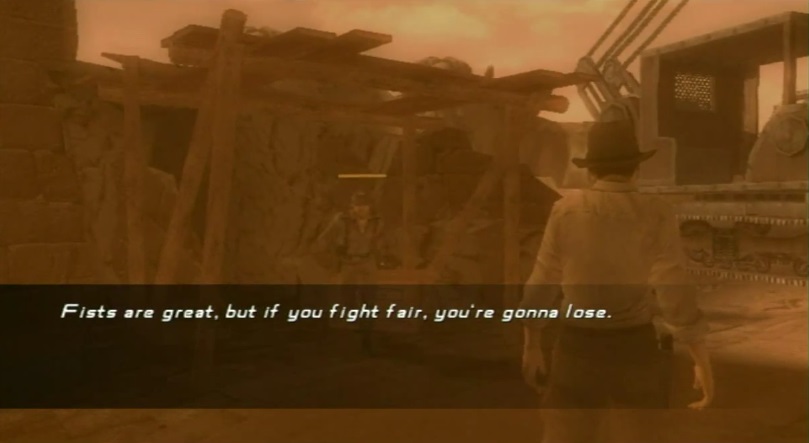
Uh, thanks. I’ll take that under advisement.
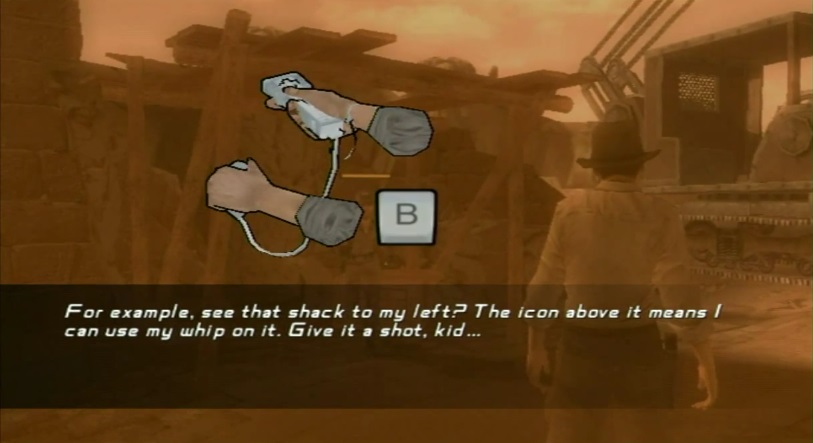
Very well…

Yes, that seems important, too. Now, if you don’t mind, I’d like to get back to pla—
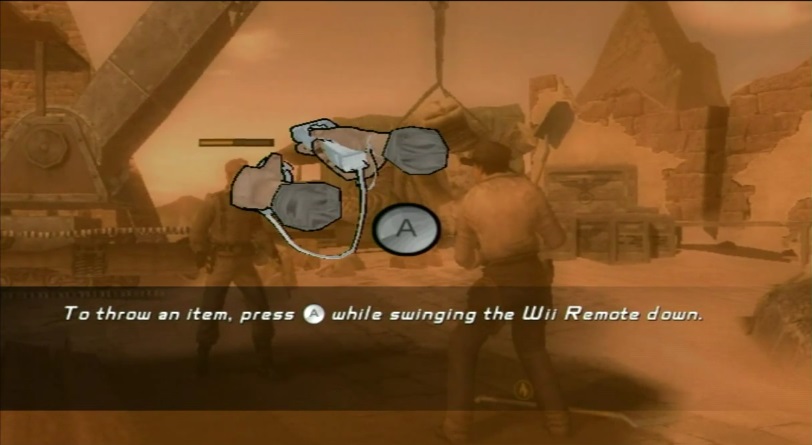
Whatever. Let’s get this over with.

There is a limit to how much of this I can retain in such a short span of time, you know.
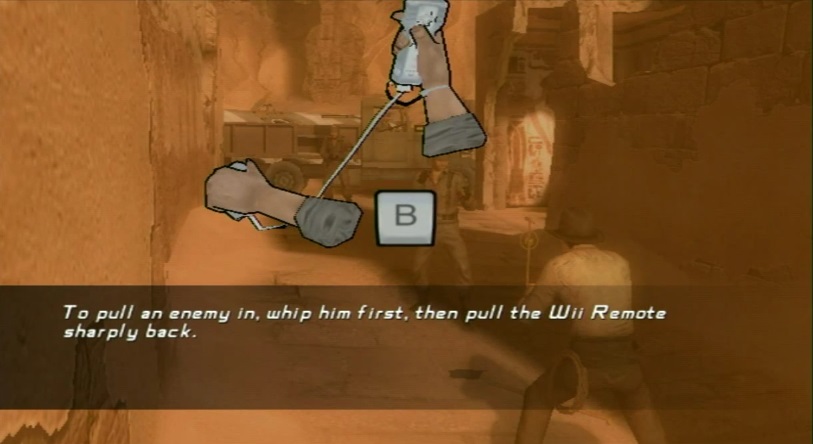
This looks tiring. I’m getting tired.
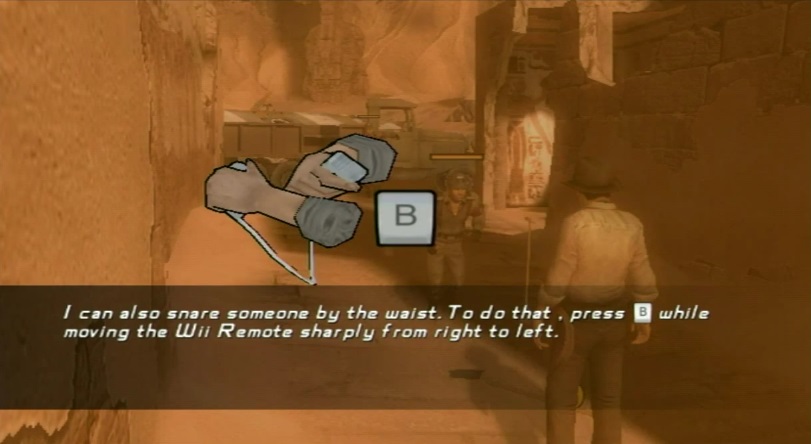
Can you now. That’s fascinating. You should write a book.
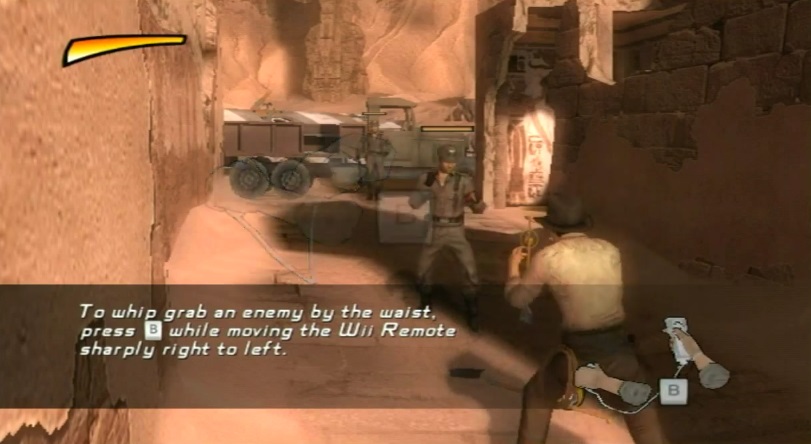
That’s basically the same motion as the right hook, and I had some trouble with that…
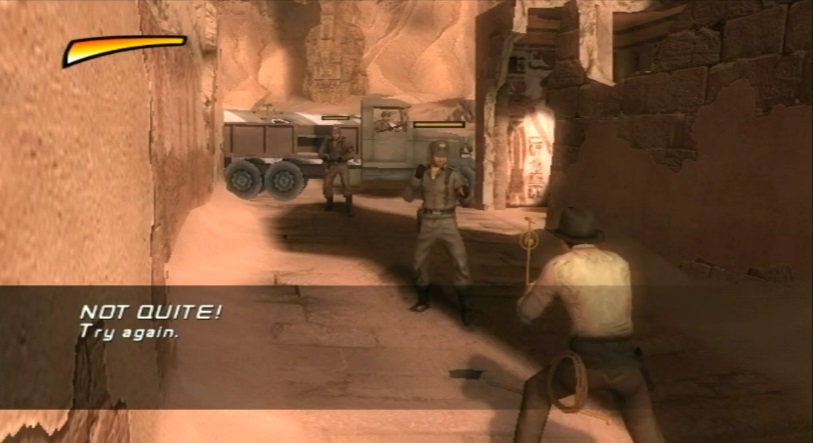
Uh…trying.

TRYING!

I’M TRYING! RECOGNIZE THAT I HAVE FAILED THIS CHALLENGE AND MOVE ON, GAME.

I AM GOING TO THROW MY WIIMOTE THROUGH THE SCREEN NOW. OH, WAIT, NO. I FINALLY GOT IT.

*whimpers*
It took all the gaming ability I could muster, but I finally made it through the tutorial. Nearly 10 minutes of stop-and-go practice exercises against stationary targets that didn’t fight back…followed by 60 seconds of suddenly applying everything I’d just forgotten against armed bad guys in real time.
When the controls were slower to respond than the tutorial led me to believe, when I confirmed that any move requiring a sideswipe was completely unreliable, and when the camera decided it wanted to watch Indy from the sidelines instead of following him around from behind like it had done the whole game so far, showing off for teacher became the least of my concerns. My failed attempt to use my environment to my advantage made me look less like an action hero and more like a disgruntled vandal knocking over bookshelves to annoy the Germans. It was a disaster, but I somehow survived long enough to climb into a plane and proceed to the next mission.
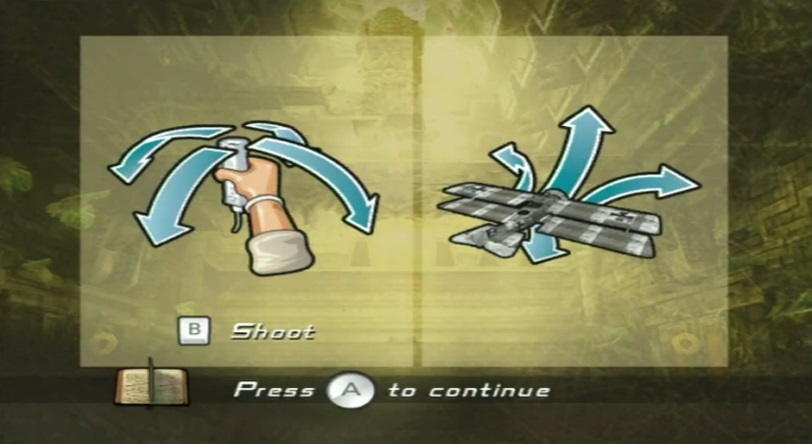
Oh. That’s…confusing. But I assume I’m about to get a huge lecture about how to fly a plane, so—

No, I’ll just crash into a wall. Thank you for the gentle transition from tricycle in the driveway to motorcycle leaping over a line of cars. Dogfighting through a tight canyon was an excellent choice for the airplane tutorial.
By sheer luck, I made it to China for the next mission—a mission free of tutorials and full of regular bad guys I could dispatch as I saw fit. At last, things were looking up. I entered a parlor full of thugs—more thugs than I’d yet faced at once—and immediately identified a number of ways I could use the environment if I felt like it. I envisioned an elegant ballet of carnage: throwing one goon into the piano, picking up a nearby pool cue and using it to thwack one goon before hurling it at another, turning around and using my whip to pull down an aquarium on another goon’s head, etc.
I mostly ended up grabbing people and repeatedly punching them in the face.
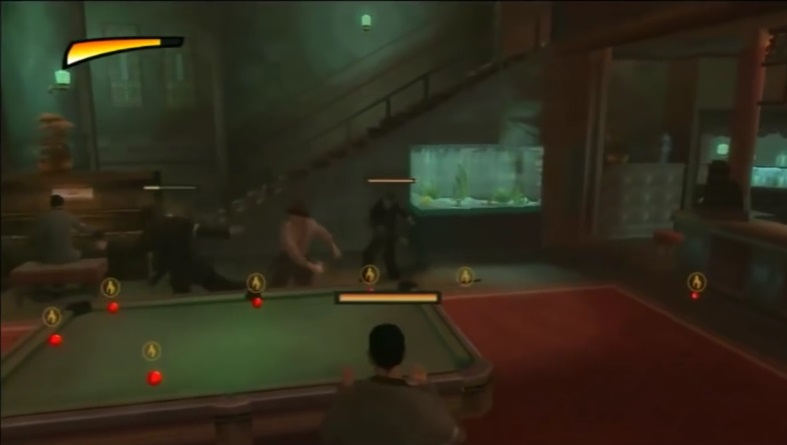
Wii motion controls lend themselves to the likes of Wii Sports, WarioWare, and Mario Party, where you’re performing simple and often repetitive tasks. Stringing together combos from a list of around 15 different moves, all of them with a motion component, is asking an awful lot of a console that only just introduced this technology a couple years before. Imagine trying to play Tekken on an NES controller, and you’ll have a pretty good idea of what it’s like to play Staff of Kings with the Wiimote/Nunchuk combo. It works, but not as well as it needs to for the game to be what it sets out to be.
By the time the kerfuffle was over, I was physically worn out. To its credit, all that controller-swinging had made me feel like I truly was involved in a fistfight, and it was somewhat cathartic to punch the air with my own fists and see digital villains get knocked down as a result. The immersion factor was there, to a degree, but I was easily snapped back to reality by health bars and interaction icons everywhere…and, more importantly, by my sore wrists and out-of-shape heavy breathing. If I felt like Indy, it was the Indy from Kingdom of the Crystal Skull who probably shouldn’t be doing his own stunts anymore. But hey, I was beyond the oppressive tutorials taking me out of the moment, so there was a chance—
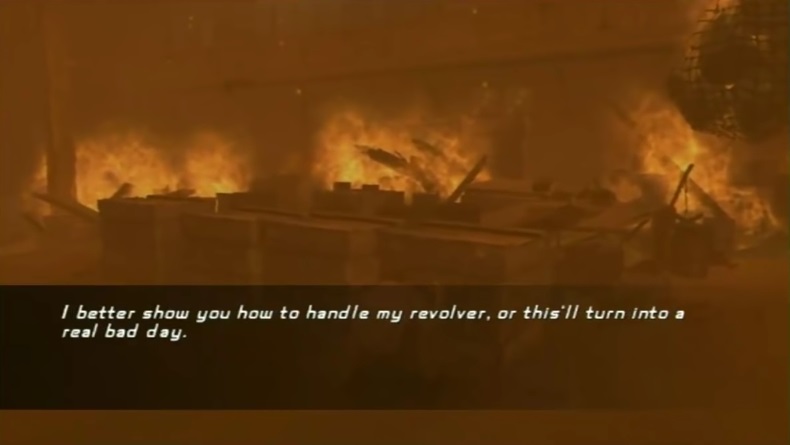
NO.
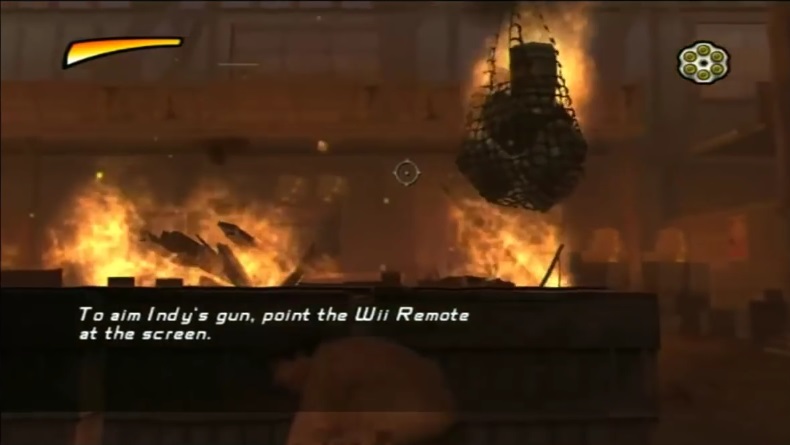
*sigh*
You know how the rest of this goes. Pinned down behind a stack of crates, it was just me and my trusty revolver and my pages of tutorial text against some goons with the high ground. They murdered me. I started back at the last checkpoint and tried again.

NO. NO NO NO! TOO LATE! BAD DAY!

I…I have run out of capital letters for you.
At this point, my shouts of displeasure had attracted the attention of my wife. “You should stop playing if you’re not having fun,” she counseled.
“But I want to keep playing!” I exclaimed, exasperated. “There’s a good game in here somewhere, but I can’t get to it because of all these tutorials!”
That was partially true. I was also too stubborn to let myself be defeated by a tutorial. It took every ounce of patience I had, but I eventually cleared the challenge.
By this point, the game had strongly reinforced how much harder combat is if you don’t use the environment to your advantage. Naturally, when I came to an area where goons were hiding behind crates, I started shooting everything that looked flammable. I’ve played Area 51; I know how this works. This sped up the battle and advanced me to the next section, where I quickly exhausted the supply of explosive decorations. Out in the middle of an open area with nothing else of interest nearby, I was left trading shots with another guy, who took me out in maybe four hits without ever suffering a scratch himself.
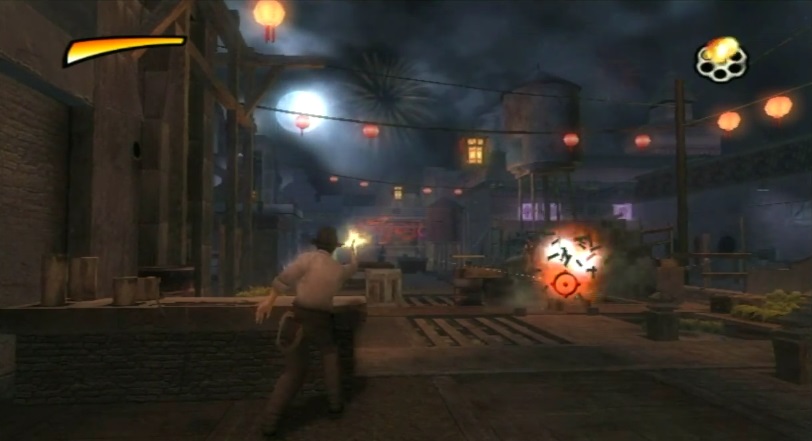
I retried this fight maybe a half-dozen times, eventually not bothering with cover at all and standing there shooting where he would appear. I thought I’d glitched the game. Every other goon in this battle—and in this game, really—could be liquidated in the traditional manner of brute force if you tried hard enough, but it was physically impossible to damage this one guy. My shots went right through him. The solution? Shoot at a water tower that looks to be (a) made of the kind of metal you can’t shoot through, and (b) way off in the background, and he’ll get doused and run off to different cover. Suddenly, using my environment went from nicety to mandatory. It’s one thing to have a boss fight so hard that you have to think creatively to survive, but it’s another thing entirely to apply different rules to different parts of your game without notifying the player.
I gave up on the game shortly thereafter, when a big burly guy threw me into a wall and I got stuck there for all eternity.
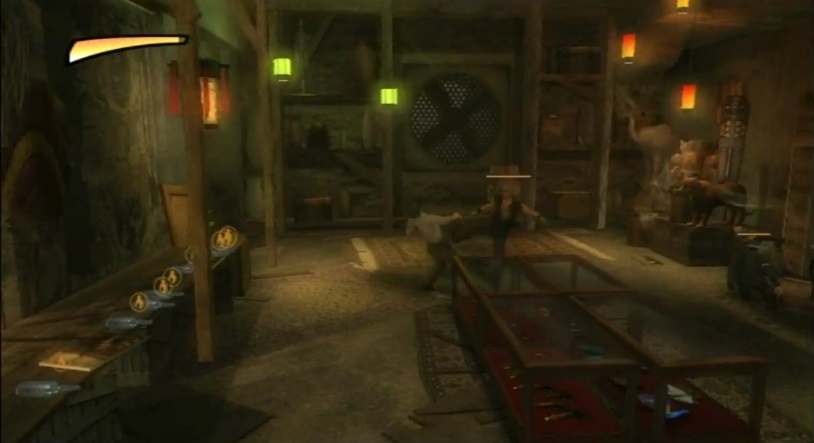
Staff of Kings employs bad game design principles to begin with, but the game ultimately fails because those principles are in conflict with each other. Extensive motion controls are intended to make the game immersive, but the reality of continuous physical exertion with controls too ambitious for the hardware, coupled with rampant tutorial popups, take the player out of the moment. Tutorials are meant to teach the player everything they need to know, but they’re of no help to the player when there’s no consistency in the presentation of information or the conditions under which the player gets to practice. On top of all that, our hero is still stuck in a wall. Needless to say, I never did discover The Fate of Atlantis, but that’s probably for the best.


Ohhhh, the era of excessive tutorials. So many games were plagued with them, oh the painful memories.
One offender for sure was Spectrobes 2: Beyond the Portals. A game that otherwise improves upon the first in pretty much every way, this sequel tutorials you on pretty much every single little itty bitty ditty thing.
This is how you move forward. Great! This is how you move to the left. Great! This is how you move to the right. Great! This is how you go backwards. Great! This is how you jump. Great! This is how you jump forward. Great! (mind you, they go on and on about each of these steps (and more) in great detail about how useful it is to move forward, and stuff.)
The worst part is, I cut out the other HALF of the tutorial popups that could’ve been included in this article. I’m still laughing about “how useful it is to move forward”, but that sounds as bad as what I endured here, if not somehow worse!